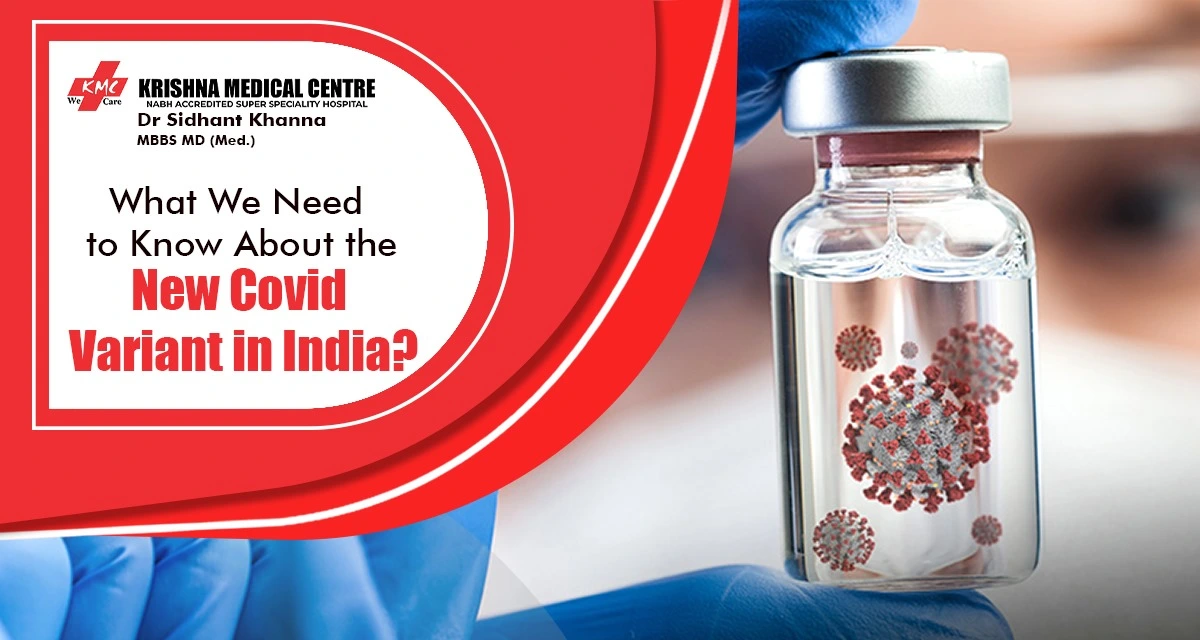Two years after the discovery of the Omicron variant of COVID-19, the virus has returned to India via its offshoot, the BA 2.86 (Pirola) sub-lineage, JN.1. Kerala reported its first case in a 78-year-old lady, marking the country’s first experience with this variation.
JN.1 COVID variant, classified as a ‘variant of interest’ by the World Health Organization, is thought to be more proficient at avoiding immunity.
Its onset corresponds with winter, a season when respiratory illnesses become more prevalent, particularly in places where the AQI level remains between bad and severe.
JN.1: The Birth of a New Variant
JN.1 COVID variant descended from the Omicron subvariant BA.2.86, also known as Pirola. It was discovered in Luxembourg and has since spread to other nations including the United States, China and most recently, India.
While details are still emerging, preliminary research suggests that the new COVID variant in India may have unique alterations that increase its transmissibility perhaps allowing it to spread quicker than its predecessors.
Understanding JN.1’s Spread
JN.1 is thought to spread by respiratory droplets and aerosols, similar to other Omicron variations. When an infected individual coughs or sneezes, these particles are released.
This new COVID variant in India, like other strains of Omicron, looks to be extremely infectious with the potential to be even more transmissible than other Omicron subvariants.
The rise in new COVID variant cases found in Kerala, India, where JN.1 was first identified, strongly suggests that this variation is being passed down through the population. Scientists are still investigating its distinctive characteristics and ways of transmission in order to better understand its spread.
Symptoms of Covid’s JN.1
The new COVID variant symptoms are similar to those of other Omicron subvariants and commonly include:
Fever: This is the most prevalent symptom and it can range from mild to severe.
Runny nose or nasal congestion: This is another typical symptom that can be accompanied by sneezing and a sore throat.
Sore throat: This may be a scratchy or burning sensation.
Cough: This can be either a dry or productive cough with mucous.
Headache: This might be either a minor or severe headache.
Muscle or body aches: These might range from a general sense of achiness to more acute discomfort in certain muscles.
Fatigue: This might vary from a slight sense of weariness to utter exhaustion.
Taste or smell loss: This is less frequent than some of the other symptoms but it can happen.
If you are suffering severe symptoms such as shortness of breath or trouble breathing, you should contact a medical practitioner.
JN.1 may also produce gastrointestinal symptoms such as nausea, vomiting or diarrhea in certain situations.
It is crucial to remember that these are only basic symptoms and not everyone infected with JN.1 will exhibit them all. Some people may only have moderate symptoms but others may experience more severe symptoms.
If you have any of these symptoms, it is vital that you be tested for COVID-19. Even if you have been immunized, you might become infected with JN.1.
If you test positive for the new COVID variant in India, you should separate yourself from others and follow your doctor’s advice. Most JN.1 patients will heal at home without the need for hospitalization.
Prevention of JN.1 COVID Variant
The JN.1 variation of COVID-19, a descendant of BA.2.86, has generated concerns due to its possible transmissibility. While much remains unknown about the variation, here are some essential factors for avoiding its spread:
Vaccination and boosters: Getting vaccinated and boosted remains the most effective strategy to protect yourself from COVID-19, especially the JN.1 form. So check that you have the most recent recommended vaccines.
Wear a mask: Wear well-fitting masks, ideally N95 or KN95 respirators, in crowded indoor situations and when physical separation is problematic.
Hand hygiene: Wash your hands often for at least 20 seconds with soap and water or use an alcohol-based hand sanitizer containing at least 60% alcohol.
Social distancing: Maintain a physical distance of at least 6 feet between yourself and others especially if they are sick or unvaccinated.
Isolate yourself: If you have any COVID-19 symptoms, isolate yourself at home and be tested right away. Inform your closest contacts about your possible exposure.
Ventilation: Improve interior ventilation by opening windows and doors or utilizing air purifiers.
Conclusion
The emergence of JN.1 shows that the Covid-19 pandemic is far from done. It does, however, highlight the extraordinary scientific advances made in understanding and battling the virus.
Continued research, vigilance in preventative measures and responsible individual behaviors will continue to be essential in minimizing the effect of JN.1 and subsequent variations.
Remember that in this pandemic, knowledge is power and remaining educated while adhering to recommended recommendations will equip us to navigate this new chapter with both hope and caution.

